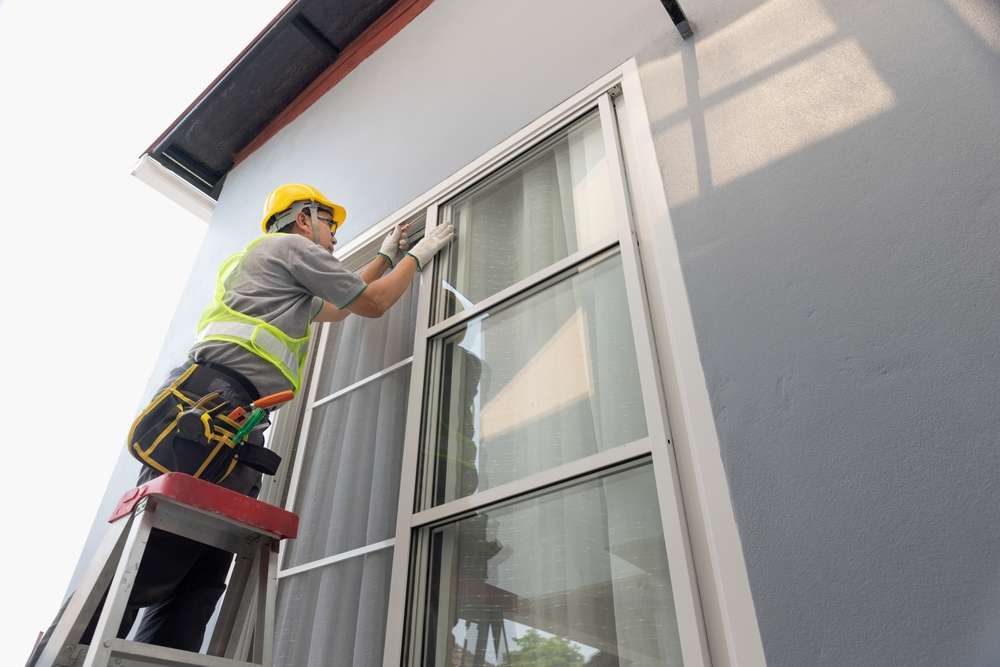Understand How to Choose the Right Scaffolding for Your Home Renovation
When undertaking home renovation projects that involve working at heights, selecting appropriate scaffolding becomes a crucial safety consideration. Whether you're painting exterior walls, replacing siding, or repairing a roof, the right scaffolding system provides stability, accessibility, and protection during your project. Many homeowners overlook the importance of proper scaffolding selection, often attempting to make do with ladders or improvised platforms that can lead to accidents and inefficient work processes.

Types of Scaffolding for Home Renovation Projects
Scaffolding comes in several varieties, each designed for specific purposes and project requirements. The most common types for residential use include frame scaffolding, which features modular components that can be assembled to create stable work platforms. Baker scaffolding (also called rolling scaffolding) offers mobility with lockable wheels, making it ideal for projects requiring frequent repositioning. Suspended scaffolding hangs from the roof or upper structure and works well for exterior wall renovations on taller homes. For smaller projects, pump jack scaffolding provides an adjustable platform that can be raised and lowered along vertical supports secured to the building. Understanding these options helps determine which system best matches your specific renovation needs.
Safety Considerations When Selecting Home Scaffolding
Safety should be your primary concern when choosing scaffolding for any home project. Always check that the scaffolding system has appropriate weight capacity ratings that exceed your anticipated loads, including workers, tools, and materials. Look for scaffolding that meets OSHA (Occupational Safety and Health Administration) standards, even for residential use. Guardrails are essential for platforms over 10 feet high, while proper base stabilization prevents tipping on uneven ground. Weather exposure is another critical factor—some scaffolding materials resist rusting and weathering better than others, which becomes important for longer projects. Additionally, consider how much assembly expertise your chosen system requires, as improper setup can create dangerous working conditions.
Matching Scaffolding Types to Specific Renovation Tasks
Different renovation projects demand specific scaffolding configurations. For exterior painting, a system with multiple platform levels allows efficient access to all areas without frequent repositioning. Roofing projects typically require scaffolding with robust guardrail systems and fall protection anchors. When replacing windows, consider adjustable platforms that can be positioned precisely at window height. For masonry work like chimney repairs, heavy-duty scaffolding with greater weight capacity becomes necessary to support both workers and materials. Interior renovations with high ceilings might benefit from specialized indoor scaffolding with non-marking wheels and narrower profiles to navigate doorways. By aligning your scaffolding choice with specific tasks, you enhance both safety and productivity.
DIY vs. Professional Scaffolding Options for Homeowners
Homeowners face an important decision between purchasing/renting scaffolding for DIY installation or hiring professionals who provide and set up their own equipment. DIY scaffolding typically costs less initially but requires proper assembly knowledge and storage space between uses. Professional scaffolding services include proper setup, ongoing maintenance, and eventual removal, eliminating safety concerns related to improper installation. For projects lasting more than a few days, rental costs for DIY equipment can approach professional service costs. Consider your renovation timeline, technical expertise, and risk tolerance when deciding between these options. Many homeowners find that professional scaffolding services provide peace of mind for complex or high-risk projects, while DIY options work well for simpler, short-duration tasks.
Cost Factors in Scaffolding Selection for Home Projects
The expense of scaffolding varies significantly based on type, materials, height requirements, and rental duration. Basic aluminum frame scaffolding typically costs less than specialized systems, while fiberglass options (used near electrical hazards) command premium prices. Height dramatically impacts costs—each additional level increases both material requirements and safety concerns. For most home renovation projects, scaffolding costs typically fall between $15-$50 per day for basic DIY rentals, while professional installation services range from $100-$300 per day depending on complexity and location.
| Scaffolding Type | Rental Cost Range (DIY) | Professional Installation | Best For |
|---|---|---|---|
| Frame Scaffolding | $15-25/day | $150-200/day | General exterior work |
| Rolling/Baker Scaffolding | $25-40/day | $175-250/day | Projects requiring mobility |
| Pump Jack System | $30-50/day | $200-275/day | Vertical siding/painting |
| Suspended Scaffolding | Not typically available for DIY | $250-350+/day | Multi-story exteriors |
| Indoor System | $20-35/day | $150-225/day | High ceiling interiors |
Prices, rates, or cost estimates mentioned in this article are based on the latest available information but may change over time. Independent research is advised before making financial decisions.
Proper Setup and Maintenance of Home Renovation Scaffolding
Regardless of which scaffolding system you choose, correct assembly and ongoing maintenance remain critical for safety. Always place scaffolding on firm, level ground, using base plates or mudsills to distribute weight properly. Secure tall scaffolding to the building structure at regular intervals to prevent tipping. Before each use, inspect all components for damage, rust, or wear. Tighten all connections and verify that guardrails and toe boards are secure. Keep platforms clean and free of trip hazards, removing tools and materials at the end of each workday. During extended projects, perform weekly maintenance checks, looking particularly at weight-bearing components and connection points. Proper care not only ensures safety but also extends the useful life of your scaffolding investment.
Choosing appropriate scaffolding for home renovation involves balancing safety requirements, project needs, and budget considerations. By understanding the different types available, matching them to your specific tasks, and properly maintaining your selected system, you create a safer and more efficient work environment for your renovation project. Whether you opt for professional installation or DIY assembly, the right scaffolding becomes an essential tool that supports successful project completion while protecting workers from unnecessary risks.




